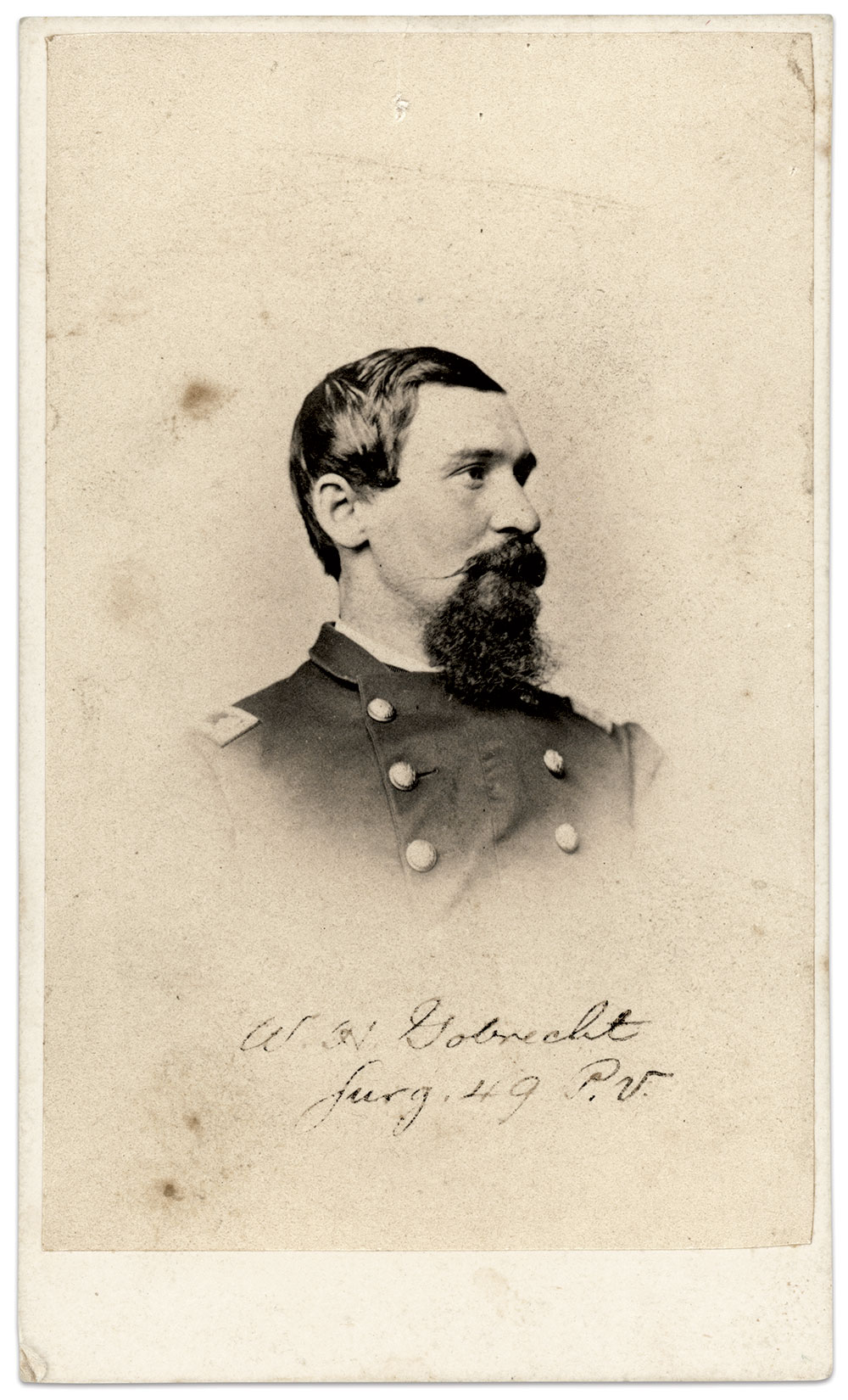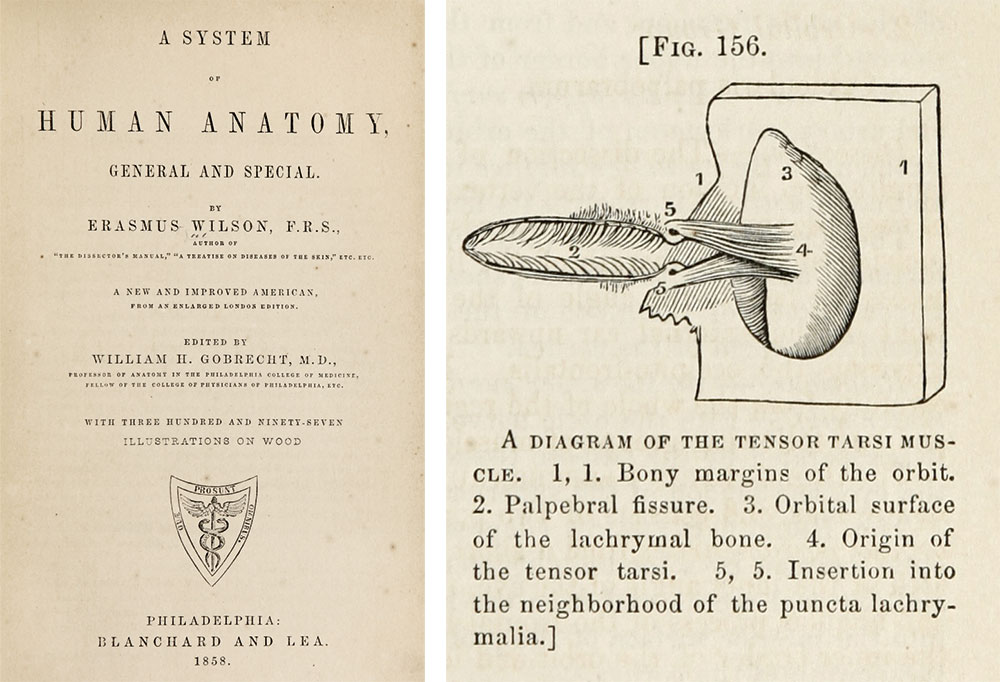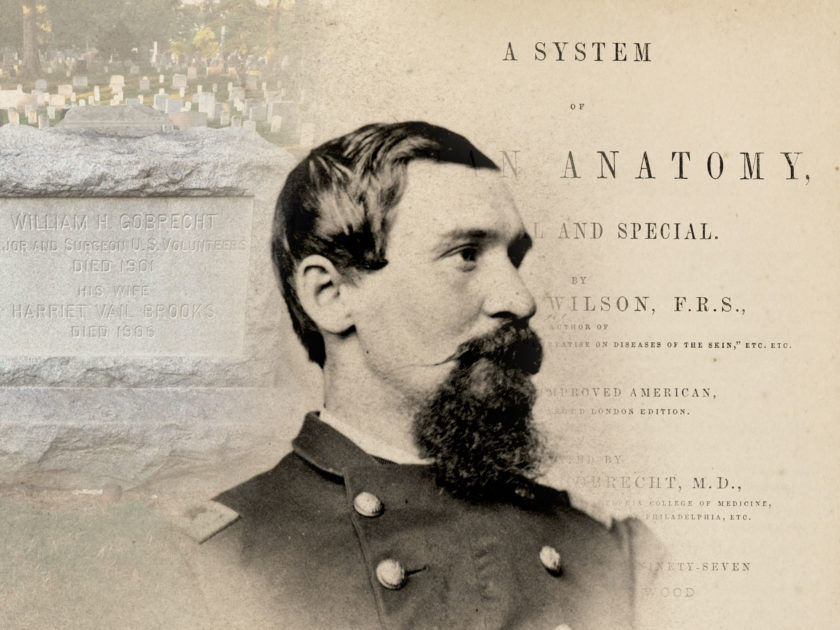Tall, slow-speaking William Henry Gobrecht looked every inch the soldier and might easily be confused for a general. His commanding bearing came not from battlefield glory, but lecture halls where he taught medicine.

Prior to the war, the native of Philadelphia became best known for holding court in classrooms. “His appearance was always greeted by warm applause,” noted a former student, “for his charm as a lecturer consisted in clothing a very dry subject with ornate rhetoric, unfailing pathos and a kindly humor all his own.”

He had a way with anatomical mnemonics, recalled the former student. With a “curious smile he would give the details of various muscular discoveries.” For instance:
“Professor Horner felt in the corner,Where the orbicularis doth lie;He put in his thumb, out something come,He called it the tensor tarsi.”
The student recalled how those from other colleges crashed Gobrecht’s popular lectures. Asked why they came, they replied, “To hear Gobrecht.”
Many who never encountered the professor in class became familiar with him as editor of the American edition of Wilson’s Anatomy. The ubiquitous textbook sat on the shelves of just about every student and professor. The volume won critical acclaim after publication in 1858.
Three years later, the good doctor traded the scholarly robes he donned at Philadelphia College of Medicine for an army uniform and a commission as surgeon of the 49th Pennsylvania Infantry. The regiment joined the Army of the Potomac, where leaders tapped Gobrecht for duties in his brigade, commanded by Gen. Winfield Scott Hancock.

In early 1863, Gobrecht left the 49th for the U.S. Medical Volunteers. He wound up in Ohio, and, after the war, practiced medicine and taught in the Buckeye State and later in Fort Wayne, Ind. His work eventually brought him to the Pension Bureau in Washington, D.C.
The good doctor died in the nation’s capital in 1901. His wife, Harriet, survived him.
This portrait is part of the Arlington National Cemetery (ANC) Book Project. Established by Jim Quinlan, owner of The Excelsior Brigade, its mission is to identify approximately 15,000 Civil War veterans interred on the hallowed grounds of the cemetery, and to provide a biographical sketch and photograph of each individual. If you have an image to share, or would like more information about the ANC project, please contact Jim at 703-307-0344.
VISIT OUR STORE to subscribe, renew a subscription, and more.

